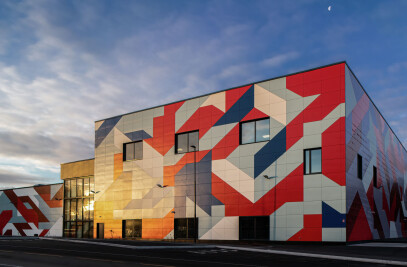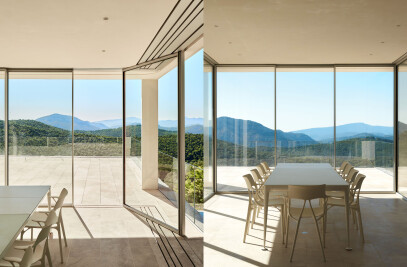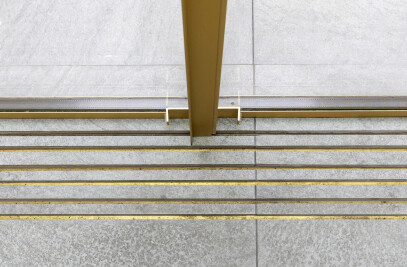The façade of this winery building in Kitros, Greece is made from 13,596 individually rotated and tilted bricks and was assembled on-site with an innovative augmented bricklaying process that combines the power of computational design with the dexterity and skills of human craftsmanship, introducing a new fabrication paradigm.

The technology used was developed by Gramazio Kohler Research – the Chair for Architecture and Digital Fabrication at ETH Zurich. Known for their pioneering use of robotics in architecture, the widespread use of the technology in the field still faces many barriers, including the limited mobility and dexterity of existing industrial robots, and the relative difficulty of automating and handling malleable building materials.

To address these challenges, the researchers have sought to reintroduce craftsmanship into the digital fabrication process. By optically instructing masons with tailored digital information through a custom augmented reality user interface, a direct connection to the digital design model can be established. This craft-specific user interface allows masons to intuitively understand where to place the bricks according to the digital blueprint and computationally derived spatial model.

The technological innovation of this system uses visual-inertial object tracking features and real-time feedback to precisely relate what has already been physically built to the digital model, exceeding the accuracy of conventional holographic representations used as state of the art in this domain. Through this augmented reality interface, the masons no longer depend on physical templates but can work with enhanced spatial precision while maintaining their craft and expertise in mortar handling.
The augmented bricklaying process that was used here results in a semi-transparent parametric façade with an ever-changing pattern that resembles light moving across a liquid surface. Furthermore, the gaps between the individual bricks allow for ventilation and control the Greek sun.































